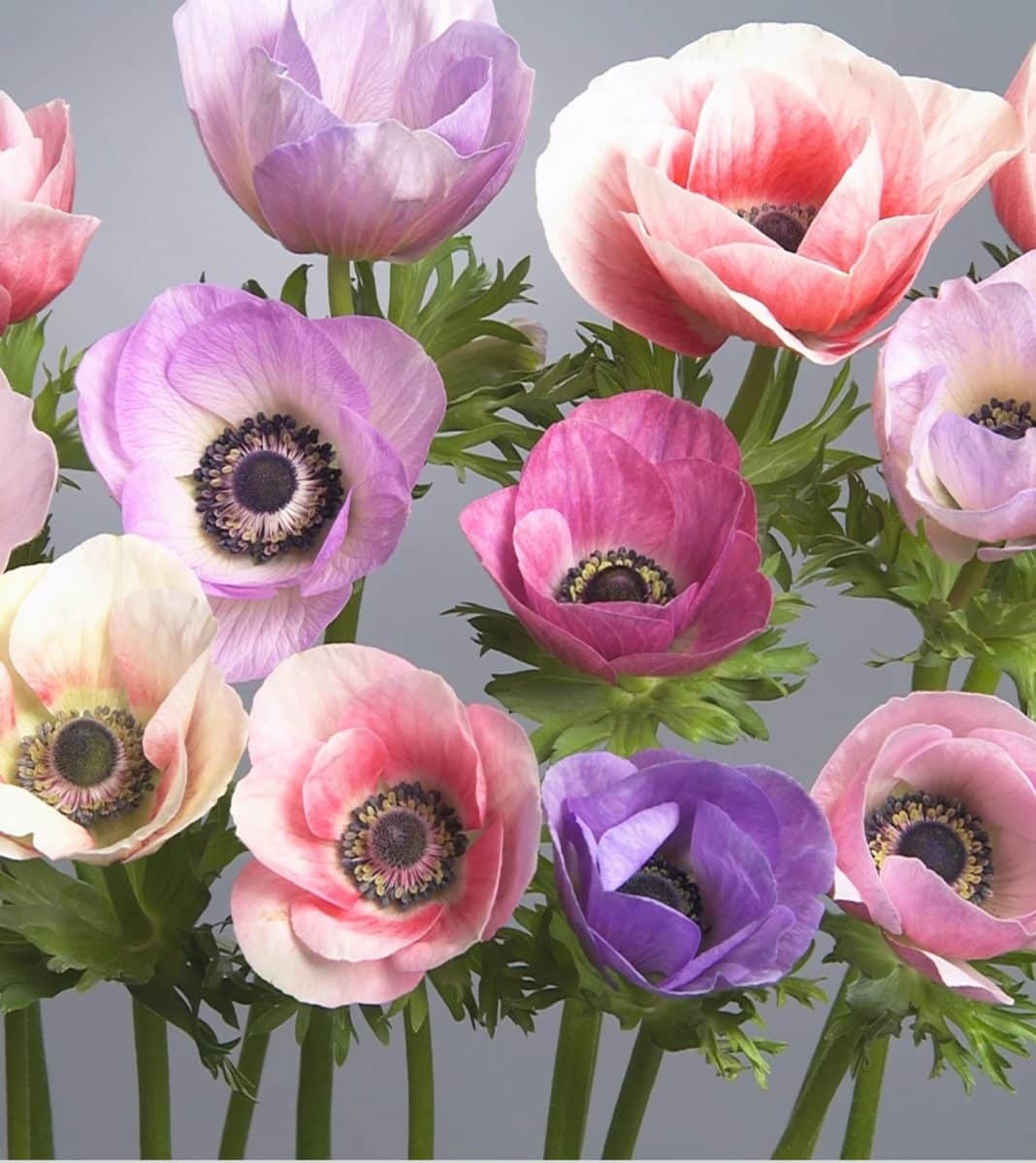Anemone are perennials with beautiful poppy-like flowers that flutter in the breeze in colours, ranging from bluish violet, white, pink, red, and hues in a range between violet and pink.
There is no true blue anemone colour. They have lots of low-clumping foliage that you can grow anywhere.
Cut flowers for a vase or bouquet. It’s best to harvest the flowers early in the morning, while the bloom is still closed.
Flowers open up in room temperature, out of direct sunlight.
They will thrive in light to partial shade, tolerating full sun, as long as there’s sufficient moisture in the ground.
Caution should be taken with respect to their location, as their habit of spreading can become invasive.
When planting you may want to consider placing them in a bottomless container.
There are several types of Anemones available in autumn, winter and spring, with their best season by far being in spring.
Spring flowering anemone plants will generally grow from rhizomes or tubers.
Autumn and winter flowering types usually have fibrous or tuberous roots. Before planting, soak tubers overnight and place them in moist, rich soil, avoiding overly-wet conditions.
Plant 3-4 inch deep, on their sides, and space them 4-6 inch apart. Flowering will appear three months after planting.
Planting in autumn will flower in early spring and continue flowering steadily for eight to 10 weeks; winter-planted anemones will flower mid-spring, continuing up to six weeks.
Once established, care of anemone consists of watering as required; remove old foliage, cutting back to the ground, prior to new growth.
Clumps of rhizomes can be divided every 2-3 years in spring-time.
Tuberous types are best separated during their dormant period in summer.






